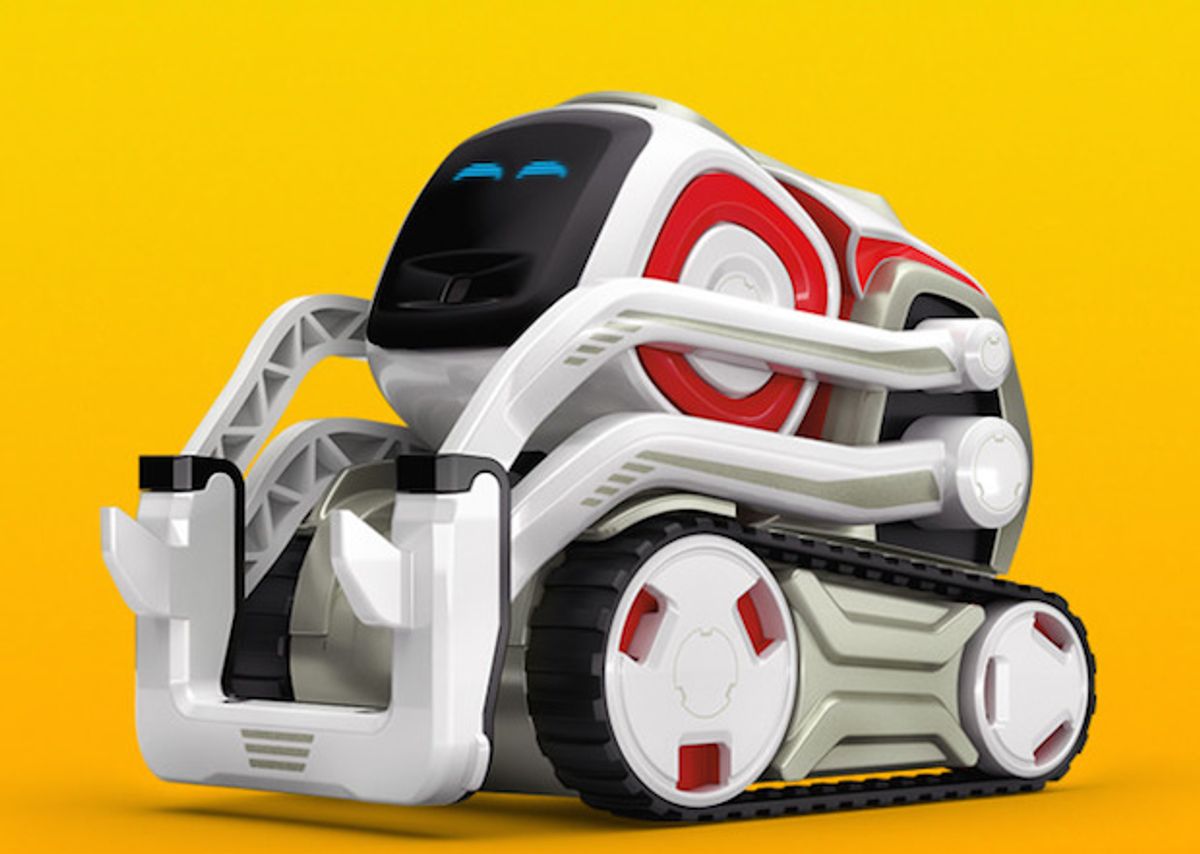Today, Anki, which made its splashy debut a few years back with their little autonomous racing cars, has announced a new robot toy called Cozmo. Cozmo is (according to Anki) “one of the most sophisticated robots available today,” which could be correct depending on your definitions of “one of the most sophisticated,” and “available today.” What does Cozmo do? “He is charming, a bit mischievous, and unpredictable. He recognizes and remembers you. He interacts with you, plays games, and gets to know you over time.”
Sounds interesting, let’s take a look.
It’s not completely clear from the video, but Cozmo works by being tethered to your phone over Bluetooth and WiFi. All of the visual processing and is done through an app/cloud, which analyzes data from Cozmo’s sensors and then sends commands back to the robot itself. Cozmo can recognize faces, play a variety of interactive games, not fall off of things, and return to its charging dock autonomously, where a 10-minute charge gets you about an hour and a half of run time. The video only shows a few behaviors, but we’re assuming that there will be lots more on launch. It’ll be available this fall for $180, or you can pre-order one for $160.
The big attraction of Cozmo, according to Anki, is the fact that it can “connect with the humans around it” and “[bring] the magic of a robotic character to life.” “We’re creating something that really does feel like it’s part of the family,” Anki says. To do that, Cozmo has what the company calls an “emotion engine,” which “evolves as you develop a bond” with the robot. “So call him self-aware, call him almost human.”
This is familiar rhetoric from companies marketing social robots, and in our experience, it’s not only unrealistic, but sets expectations such that the robot cannot possibly hope to achieve them. Part of the family? Almost human? Does Anki seriously think that Cozmo is going to manage that? I’ll buy that Cozmo will be a clever and compelling character that most people will happily form some superficial emotional attachment to, but I’m really not sure about much beyond that, even as Anki continues to oversell it: “Robots with comparable capabilities are found in labs for thousands of dollars and stand several feet tall,” Anki’s blog states.
The thing is, I’m not sure why Anki feels like it’s necessary to frame Cozmo this way. We’ve seen the video; it’s a cool little robot. It can do fun stuff. The software looks to be top notch and I love the expressive face and actions. It’s affordable and it’ll be extendable through an SDK. Why isn’t that enough?
Besides this expectation game, as a social robotic toy, Cozmo is up against one other big hurdle: whether or not it’ll keep its users engaged beyond that first period of novelty. Everyone who’s seen this thing so far seems smitten with it after 5 minutes, and I’m sure I would be too. It’s utterly charming. But, is Cozmo fundamentally new enough, different enough, and capable enough to engage the user substantially once that initial novelty wears off?
We should point out that Cozmo is far from the first social, emotional robotic companion toy: many other companies have tried this sort of thing before, with results that can probably best be described as mixed. The most successful were Tamagotchi and Furby (due in part to their incredibly low cost), and Aibo was also a success, with its complexity and capability justifying the several thousand dollar price. It’s probably more appropriate to compare Cozmo to things like Pleo or Romo: lots of intelligence, a reasonable amount of physical interactivity, and a price that’s affordable but not an impulse purchase.
In 2013, for example, Romo was $150:
Cozmo and Romo superficially have a lot in common, and the videos promise many similar things. Fundamentally, each leverages the power of your smartphone to give a (relatively) cheap robot access to a powerful brain. 2013 is forever ago in robot years, however, and Cozmo looks like it’s able to explore some substantial advances in computer vision and AI to offer more “emotional” complexity.
I’m perfectly prepared to believe that Cozmo is both unique and fundamentally better at what it does than any of these other robotic toys, but it remains to be seen whether that’s going to be enough to make it a hit. We’re very impressed by the robot itself, even as we’re concerned by the difference between what it actually is and how Anki insists that we think of it. Over the next few months, we’re hoping to see less rhetoric, and more examples of how Cozmo’s emotional, artificial intelligence will keep it engaged with users over the long term. If Anki can pull that off, we’ll be lining up for a Cozmo of our own.
[ Cozmo ]
Evan Ackerman is a senior editor at IEEE Spectrum. Since 2007, he has written over 6,000 articles on robotics and technology. He has a degree in Martian geology and is excellent at playing bagpipes.



